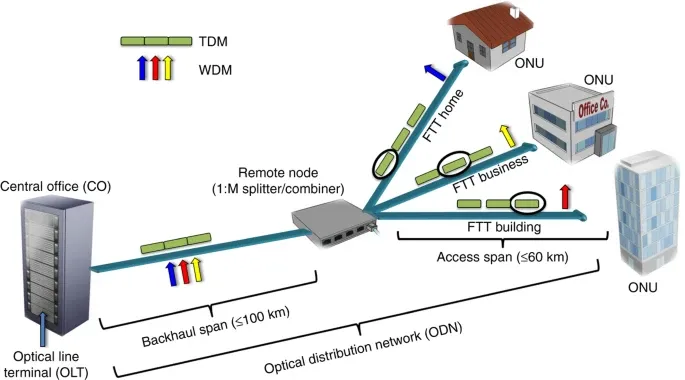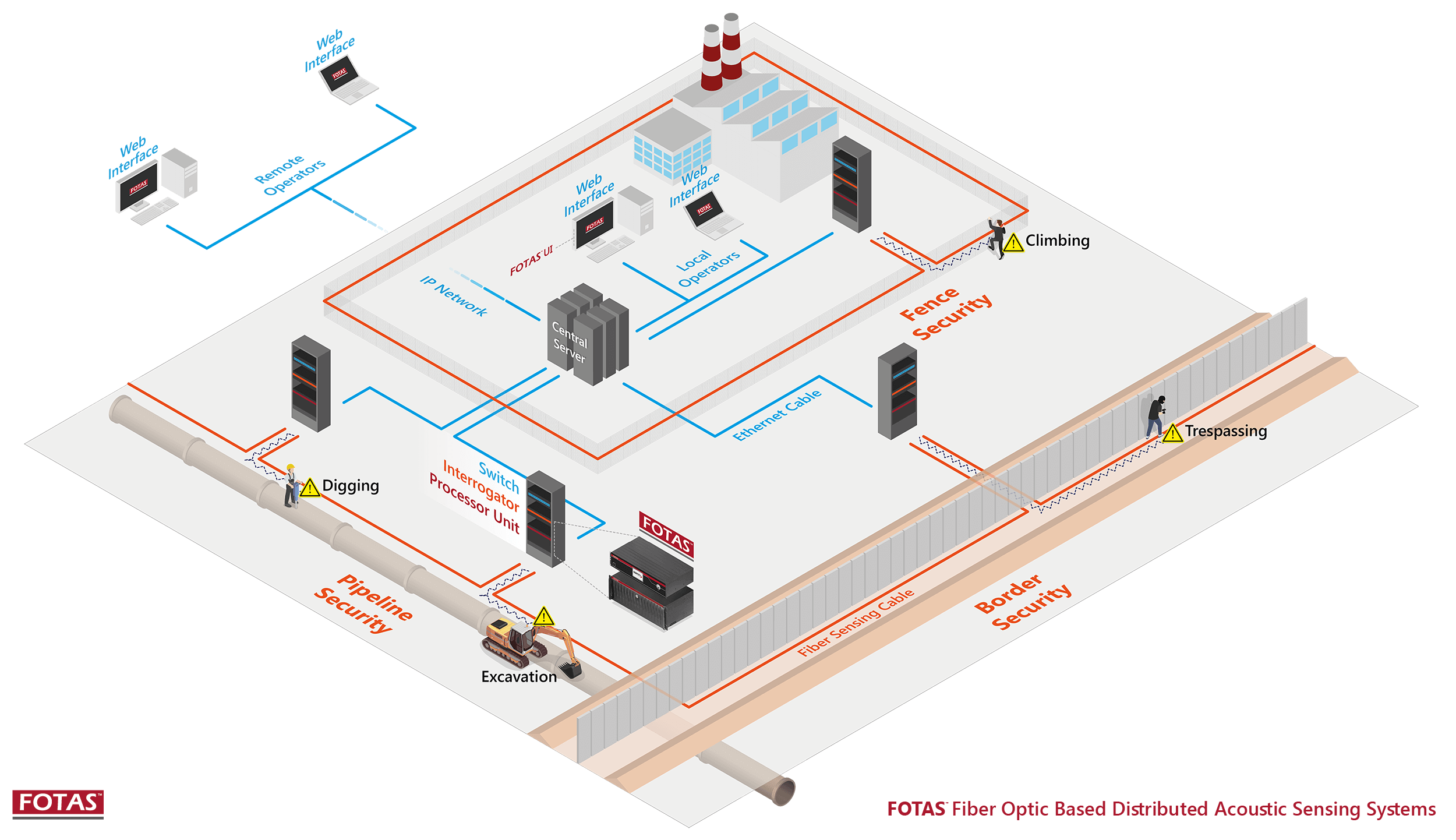Enhance Your Safety With Advanced Fiber Optic Security Solutions
In a period where safety is critical, advanced fiber optic safety and security systems offer an engaging service for enhancing safety and security across numerous environments. What implications do these innovations hold for future safety measures?
Advantages of Fiber Optic Security
Utilizing the advantages of fiber optic modern technology dramatically boosts safety systems across different applications. One of the primary benefits is the boosted data transfer ability, permitting for the transmission of large quantities of data at high speeds. This is specifically important for real-time video clip monitoring, where high-resolution feeds can be sent out without latency, guaranteeing instant feedback capabilities.
In addition, fiber optics exhibit remarkable resistance to electromagnetic interference, which is essential in settings with potential signal disruptions. This reliability makes sure constant performance in vital security operations. Furthermore, fiber optic wires are much less vulnerable to touching and unauthorized access contrasted to standard copper wiring, therefore boosting data stability and confidentiality.
An additional notable benefit is the sturdiness of fiber optic systems; they are much more immune to ecological factors such as moisture, temperature level changes, and harsh materials. This durability equates to decrease upkeep expenses and longer life expectancies for safety and security installments.
Last but not least, the lightweight nature of fiber optic cable televisions promotes easier installation and directing, specifically in intricate infrastructures (fiber optic security system). Inevitably, the integration of fiber optic modern technology right into protection systems not just strengthens protection actions but also optimizes functional effectiveness
Key Features to Take Into Consideration
When evaluating fiber optic safety systems, a number of essential functions should be taken into consideration to ensure optimal performance and efficiency. First, analyze the system's discovery range and sensitivity; a considerable variety enables checking huge areas, while high level of sensitivity guarantees that even minor disruptions are spotted immediately.
Following, take into consideration the combination capabilities of the system. A fiber optic safety and security system ought to perfectly user interface with existing security steps such as electronic cameras and alarms, developing a natural protection network.
Resilience and environmental resistance are also vital functions. Ensure that the system is developed to withstand rough weather and possible physical threats, as this will certainly lengthen its functional lifespan.

Last but not least, consider the scalability of the system. A robust fiber optic safety system ought to be easily expanding to fit future needs without substantial overhauls. By thoroughly taking into consideration these attributes, you can pick a fiber optic safety service that improves safety and protection in your setting.
Setup Process Overview
To effectively apply a fiber optic safety and security system, an organized installation procedure is important. This procedure begins with a comprehensive site assessment to figure out the details safety and security needs and to determine optimum locations for fiber optic wires and safety and security gadgets. Following this assessment, the setup team will develop a thorough strategy, including cable paths, needed tools, and compliance with local regulations.
Next, the setup includes laying the fiber optic wires, ensuring they are secured from environmental variables and physical damage. Appropriate handling strategies are important, as fiber optic wires are delicate and can be quickly additional reading damaged. After the cabling is installed, ports and terminations are diligently completed to ensure signal integrity.
The subsequent stage is composed of setting up safety gadgets such as cameras, movement detectors, and alarm system systems, all integrated with the fiber optic network. Extensive screening is performed to validate that all elements are operating properly and to guarantee optimum efficiency.

Comparing Fiber Optic to Standard Equipments
The evolution of security innovation has caused significant advancements in the comparison in between fiber optic systems and traditional copper-based systems. Fiber optic systems utilize light to transmit information, supplying premium bandwidth and rate compared to their copper counterparts. This results in improved information transmission abilities, making optical fiber ideal for high-resolution video security and real-time surveillance.
Additionally, fiber optic cords are resistant to electromagnetic interference, lowering the likelihood of signal deterioration created by external aspects. This characteristic makes certain regular efficiency, also in challenging atmospheres. In comparison, standard copper systems are a lot more at risk to disturbance, bring about potential susceptabilities in security applications.
Longevity is an additional advantage of fiber optic systems. They are less prone to harm from environmental aspects such as dampness and temperature level fluctuations, which can jeopardize copper electrical wiring. Fiber optics are lighter and thinner, permitting for simpler installment and reduced physical impact.
Nevertheless, standard systems often tend to have lower first expenses, making them attractive for budget-conscious jobs. While fiber optic systems might need a greater ahead of time financial investment, their long-term benefits-- such as lower upkeep costs and better dependability-- usually surpass the first cost, placing them as a premium option for contemporary safety and security demands.
Future Fads in Safety Innovation
Emerging patterns in protection innovation are positioned to change the landscape of monitoring and danger detection - fiber optic security system. As organizations increasingly face sophisticated hazards, advancements such as man-made click here to read intelligence (AI) and artificial intelligence (ML) are coming to be integral to safety systems. These innovations boost the capacity of fiber optic systems by making it possible for real-time data evaluation, determining anomalies, and automating actions to prospective breaches
Furthermore, the assimilation of the Web of Points (IoT) is transforming protection anchor frameworks. IoT tools can supply detailed situational awareness and assist in seamless communication between different protection components. This interconnectedness enables much more effective surveillance and faster event reaction times.
Biometric verification is also acquiring momentum, giving a greater level of protection via distinct physical attributes. As this modern technology advances, it is likely to be included right into fiber optic systems for enhanced accessibility control.
Conclusion
In final thought, advanced fiber optic security systems represent a considerable improvement in safety and security innovation. The change from traditional systems to fiber optic services shows a growing pattern towards extra reliable and effective safety and security steps in a progressively complicated technological landscape.